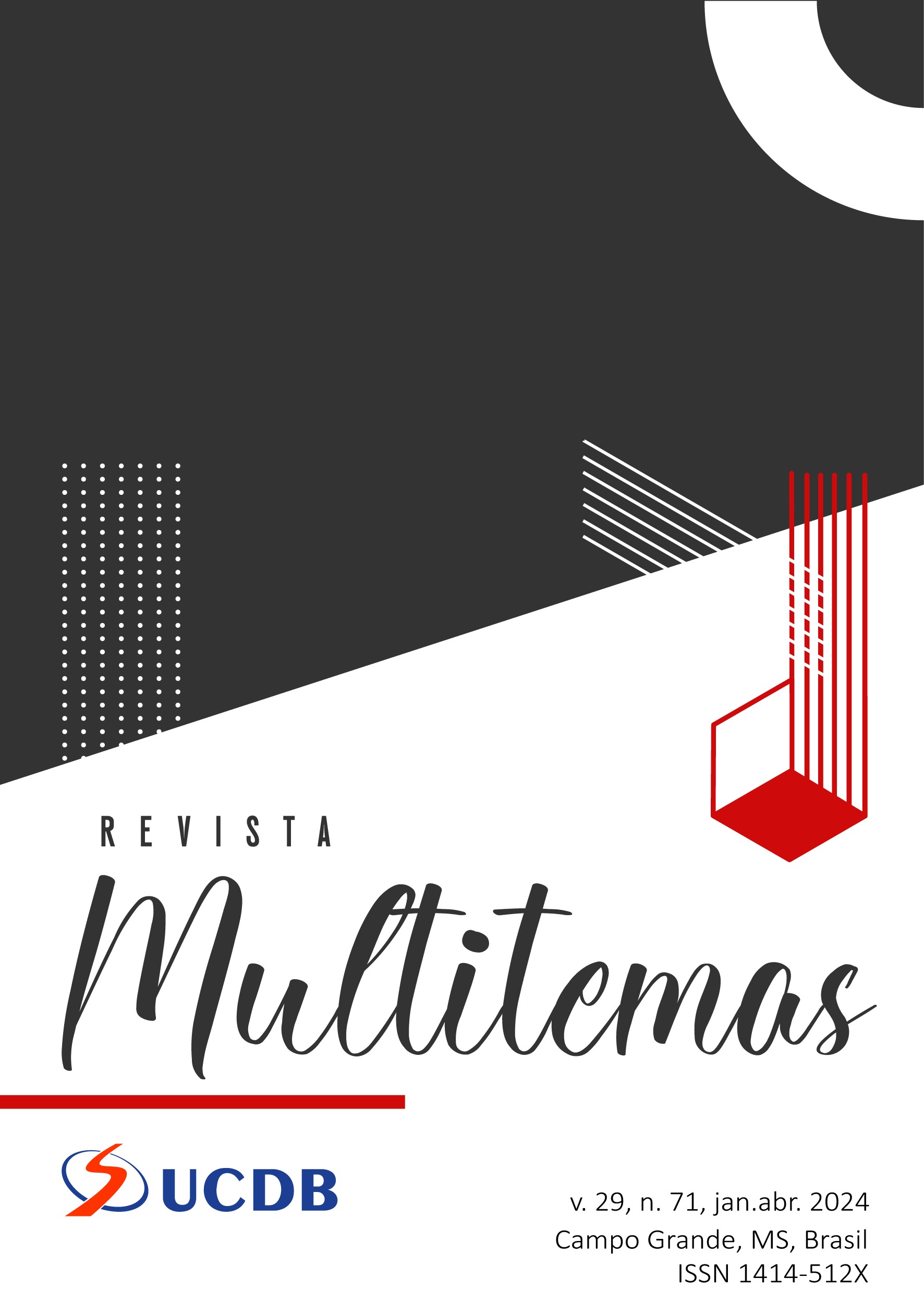Desarrollo de aplicación móvil en disfunción dermatológica y estética
DOI:
https://doi.org/10.20435/multi.v29i71.4280Palabras clave:
aprendizaje móvil, tecnología, innovación, aplicación, salud estéticaResumen
La población mayoritariamente brasileña presenta trastornos comunes entre jóvenes y adultos denominados enfermedades estéticas, por ejemplo, acné, melasma, psoriasis y erupción cutánea. Ante este escenario, el desarrollo de una aplicación móvil se ha vuelto factible, con la tecnología creciendo exponencialmente, y, al mismo tiempo, también hay un creciente interés por el desarrollo de nuevas formas de difusión de contenidos de una manera práctica. En este estudio, el objetivo era ayudar a personas no profesionales, académicos y profesionales de la salud y la estética. Un gran porcentaje eran jóvenes (74,7%), con edades comprendidas entre los 18 y los 29 años, pero el objetivo de la aplicación no es exclusivo de este perfil. Entre ellos, el público estudiado está interesado en pagar por tener la aplicación en su smartphone. Así, el atlas virtual de disfunciones estéticas demostró ser una herramienta para no profesionales y profesionales ayudando en la adquisición de información.
Citas
BAYOU, M. E.; KORVIN, A. Measuring the leanness of manufacturing systems—a case study of Ford Motor Company and General Motors. Journal of Engineering and Technology Management, [s.l.], v. 25, n. 4, p. 287–304, 2008.
BOUDREAUX, E. D.; WARING, M. E.; HAYES, R. B.; SADASIVAM, R. S.; MULLEN, S.; PAGOTO, S. Evaluating and selecting mobile health apps: strategies for healthcare providers and healthcare organizations. Translational behavioral medicine, [s.l.], v. 4, n. 4, p. 363-71, dez. 2014.
DITZZ, Á. J. M.; GOMES, G. R. R. A utilização do aplicativo plickers no apoio à avaliação formativa. Revista Tecnologias na Educação, [s.l.], ano 9, v. 19, p. 1-13, jul. 2017.
DYER, I. C. An examination of typographic standards and their relevance to contemporary user-centred web and application design. In: RAU, P. L. P. (Ed.). Cross-Cultural Design: 6th International Conference, CCD 2014 held as part of HCI International 2014. Heraklion: Springer International Publishing, 2014.
GARG, S.; BALIYAN, N. Comparative analysis of Android and iOS from security viewpoint. Computer Science Review, [s.l.], v. 40, n. 2, 2021.
GOUVEIA, E. L.; ROAZZI, A.; MOUTINHO, K.; DIAS, M. G. B. B. Raciocínio condicional: influências pragmáticas. Estudos de Psicologia, Natal, v. 7, p. 217-25, 2002.
KORRAPATI, N. H.; PERERA, M. H.; SWAMY, P. K.; RANGANATH, P. A.; ANKIREDDY, K.; THOMAS, S. A.; BATHALA, R. P. Skincare Routine During The COVID-19 Pandemic: An Online Survey. International Journal of Progressive Sciences and Technologies, [s.l.], v. 5, n. 2, 2021.
ŁOPACIUK, A.; ŁOBODA, M. Global beauty industry trends in the 21st century. In: MANAGEMENT, KNOWLEDGE AND LEARNING INTERNATIONAL CONFERENCE, 2013, Zadar. Anais [...]. Zadar: Make Learn, 2013.
MILNE-IVES, M.; LAM, C.; COCK, C.; VELTHOVEN, M. H. V.; MEINERT, E. Mobile apps for health behavior change in physical activity, diet, drug and alcohol use, and mental health: systematic review. JMIR mHealth and uHealth, [s.l.], v. 8, n. 3, mar. 2020.
PECORELLI, N. et al. An app for patient education and self-audit within an enhanced recovery program for bowel surgery: a pilot study assessing validity and usability. Surgical Endoscopy, [s.l.], v. 32, n. 5, p. 2263-273, 2018.
VENTOLA, C. L. Mobile devices and apps for health care professionals: uses and benefits. Pharmacy and Therapeutics P & T, [s.l.], v. 39, n. 5, p. 356-64, maio 2014.
XHAFERI, B.; XHAFERI, G. Online learning benefits and challenges during the COVID 19 - pandemic-students’ perspective from SEEU. SEEU Review, [s.l.], v. 15, n. 1, p. 86-103, 2020.
WILMER, H. H.; SHERMAN, L. E.; CHEIN, J. M. Smartphones and cognition: a review of research exploring the links between mobile technology habits and cognitive functioning. Frontiers in psychology, [s.l.], v. 8, p. 605, 2017.
Descargas
Publicado
Cómo citar
Número
Sección
Licencia
Derechos de autor 2023 Wellington Pinto, Pedro Henrique de Oliveira Cardoso, Ludovico Migliolo

Esta obra está bajo una licencia internacional Creative Commons Atribución 4.0.
Os artigos publicados na Revista Multitemas têm acesso aberto (Open Access) sob a licença Creative Commons Attribution, que permite uso, distribuição e reprodução em qualquer meio, sem restrições desde que o trabalho original seja corretamente citado.
Direitos Autorais para artigos publicados nesta revista são do autor, com direitos de primeira publicação para a revista. Em virtude de aparecerem nesta revista de acesso público, os artigos são de uso gratuito, com atribuições próprias, em aplicações educacionais e não-comerciais.


